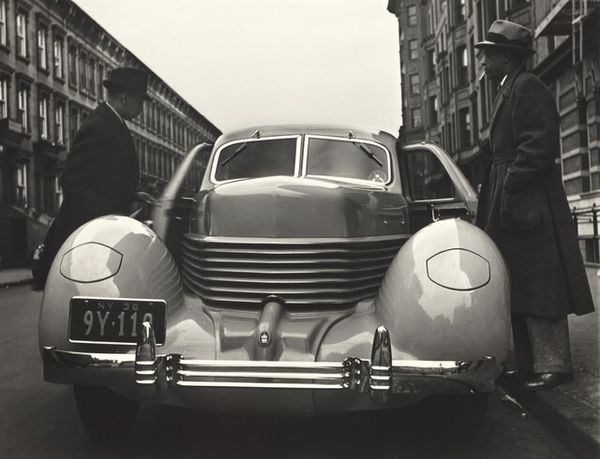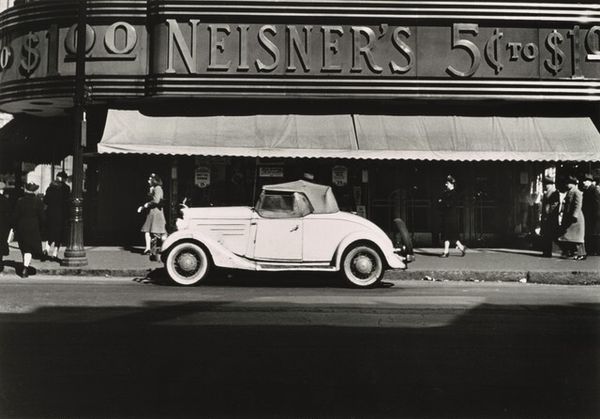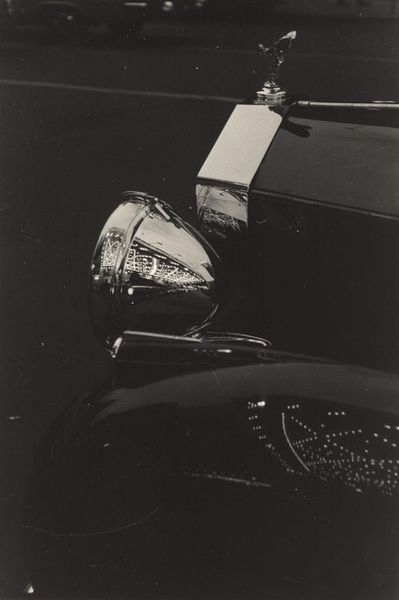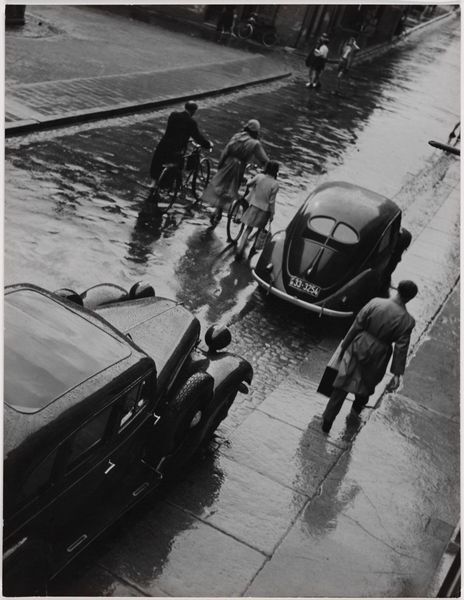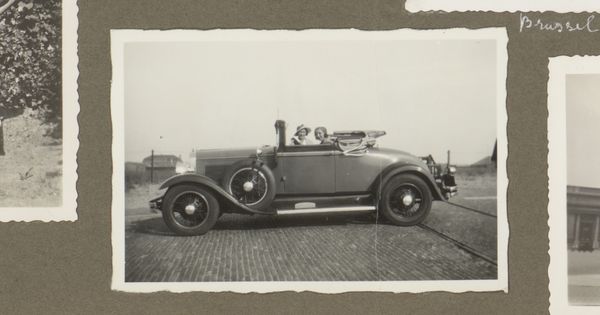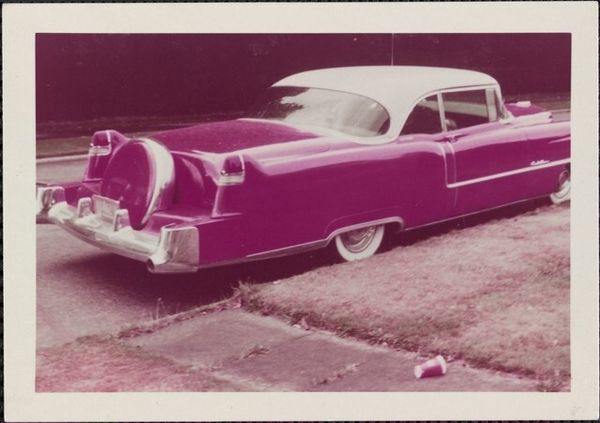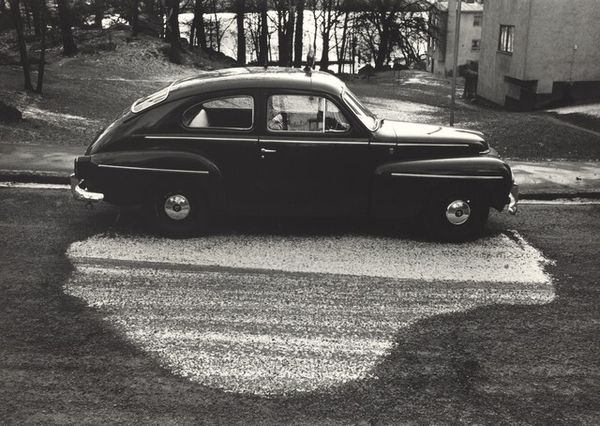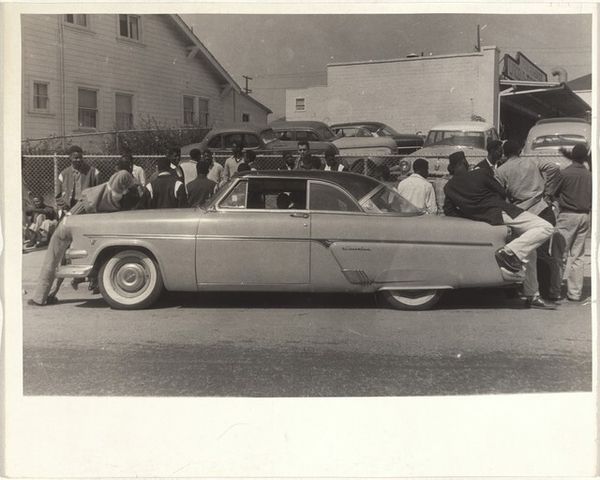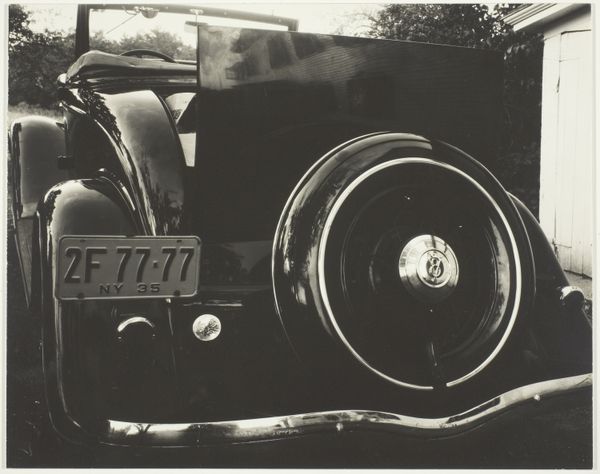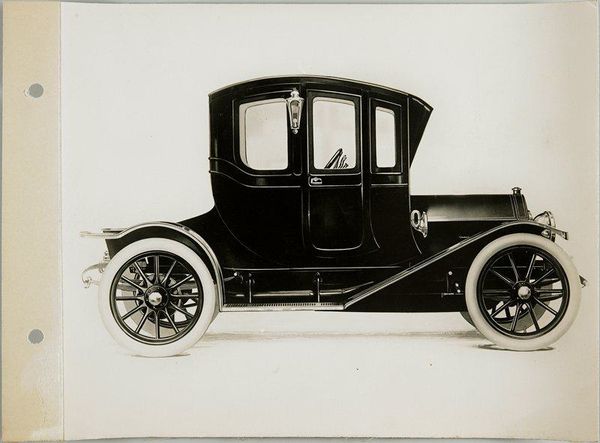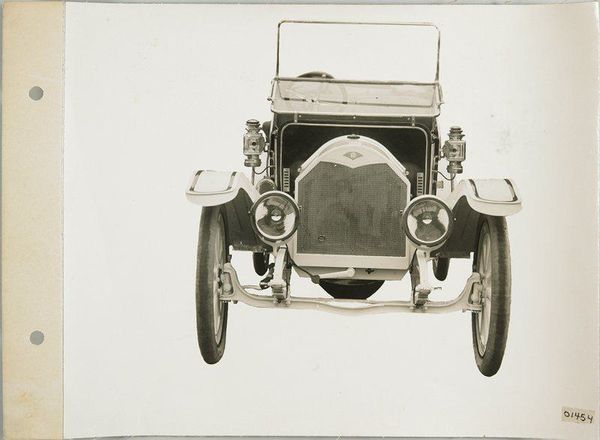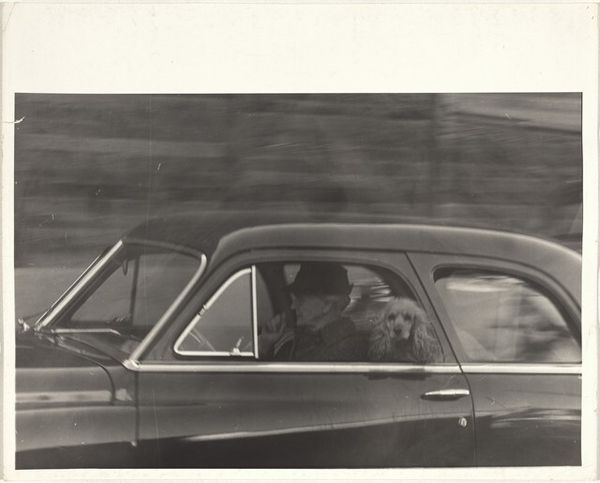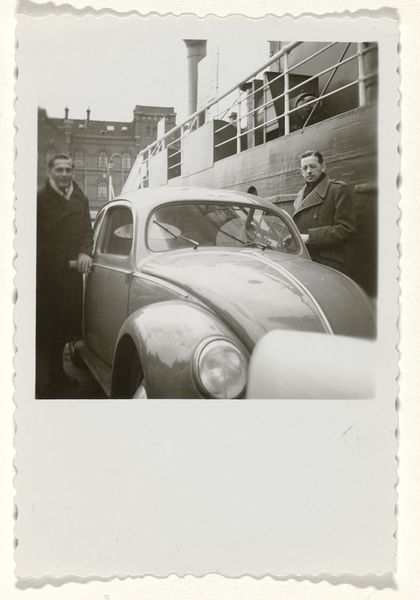
Dimensions: image: 22 x 33.1 cm (8 11/16 x 13 1/16 in.) sheet: 27.3 x 39 cm (10 3/4 x 15 3/8 in.)
Copyright: National Gallery of Art: CC0 1.0
Curator: Looking at Robert Frank's gelatin silver print, "Chauffeur/London" from 1951, what strikes you first? Editor: The weight of it, undeniably. There’s a tangible sense of materiality—the heft of that vintage automobile, the thickness of the London fog. I want to know more about how Frank captured that density. Curator: It's fascinating to consider this image through the lens of class and labor in postwar Britain. The chauffeur, slightly blurred and receding into the background, versus the pristine, gleaming car, embodies visible, rigid hierarchies. Editor: Absolutely. Consider the means of production—the car itself, a luxury object made through industrial labor. The gelatin silver printing process, too, speaks to the labor involved in producing this image. What kind of darkroom did he have access to? Who mixed the chemicals? Curator: Those details are crucial for understanding the work in its historical context. Post-war Britain was deeply stratified; this photograph becomes an articulation of social inequality and the performative aspect of wealth, amplified, even mocked, by the filmic language he employed. We need to see that, not only the object of the automobile, but a glimpse into a societal wound. Editor: Exactly! The material reality reflects that imbalance of power and the consumer culture beginning to emerge from austerity. This luxury item made by unseen hands, driven by a liveried professional whose very presence screams social difference. Curator: This challenges the ideal of post-war egalitarianism. The image subtly questions whether those ideals genuinely benefit everyone, especially considering how labor is consumed and obscured in the service of capital. Editor: For me, Frank's work is a sharp reminder that art can't be separated from the social conditions of its creation and reception. I’m still struck by that stark division of space and the visible, almost tactile sense of material reality it communicates. Curator: And for me, "Chauffeur/London" offers a layered narrative about societal expectations, obscured labor, and the illusion of upward mobility. Editor: I’ll be thinking about the hands that built that car for some time, now.
Comments
No comments
Be the first to comment and join the conversation on the ultimate creative platform.
